Lugo - Rich History, Deep Culture on the Camino Primitivo
From Rome through Germanic Invaders to Vibrant Modern Cultural Hub
The hardest part of the Camino Primitivo, 220 kilometers through mountainous Asturias, is now behind me, and after arriving in the wonderful city of Lugo yesterday, I enjoyed my second zero day, with no hot Camino hiking, to rest and recover. Following in the footsteps not just of Christian pilgrims but, even further back, my Germanic Suevi and Visigothic ancestors who conquered this area, I stormed the city by taking the front gate (unopposed!), and settled into a nice evening of pillage, AKA, the excellent pulpo and vino blanco.
Lugo is the most important city on the Primitivo between Oviedo and Santiago, with a rich history dating back to the Roman period. Lugo originated as the Roman city of Lucus Augusti, founded around 13 BCE under Emperor Augustus. It became a significant Roman administrative and military center, best known for its remarkably preserved Roman walls—now a UNESCO World Heritage Site. I made straight for the walls today for the pleasant walk, see photos below.
After the fall of the Western Roman Empire, Lugo was occupied by various groups: first the Suevi (who were in turn pushed out of what is now Germany by the Huns), who established their kingdom in the region, making Lugo an important outpost. Lugo fell under Visigothic in 585. In 714, Lugo was sacked by the Moors, but the city was recaptured by Asturias King Alfonso I shortly thereafter. The Suevi arrived as bloodthirsty godless pagans (hey, I’ve been immersed in Catholic imagery for days!), but later converted to Christianity. The Visigoths arrived with their own brand of Christiantiy, but later joined the Catholic Church. The beautiful Lugo Cathedral, built on the site and foundations of much earlier churches, started construction in 1129, and after centuries of expansion, modification, and redecoration, reflects the rich Romanesque, Gothic, Baroque, and Neoclassical influences over the centuries.
Curious about the city’s first Roman origins, shared with so much of Europe, I visited a nice little museum just outside the walls, featuring nice displays and an excavated basement with an exposed piece of cutting edge Roman technology - the capacious and high performance sewer.
Yes, the Romans left a brilliant legacy of large scale construction, such as the Colosseum and Pantheon in Rome, and they applied their engineering and city planning genius to what I think some would argue had the far greater importance and civilizational influence across a continent, especially the famous Roman roads network. Even the People’s Front of Judea recognized this, in the same era. They planned their cities from scratch, with fresh water aqueducts coming in one way and, yes, grey and black water exiting via the sewers down to the nearest river. And while buildings would fell apart, often recycled for material for new construction, the infrastructure would be used long after the Romans declined and fell. So kudos to Roman engineers and their modern brethren, who make our lives better (Shout out to Brett G.!).
Another nice museum was built atop the ruins of a substantial Roman private house and, later, a Mithraic temple, an eastern Mediterranean cult popular among Romans in the late empire, with some interesting similarities to Christianity here and there. Archeologists from the local university learned a great deal from the ruins, and how the Romans lived. One side note - it also had the best accessibility for mobility impaired I’d seen in Spain yet, with well made ramps and wheelchair lifts. Kudos to the Lugo Roman museum. Some photos below.
With its’ two thousand year history, Lugo especially appeals for its multiple, complex layers of cultural, physical, religious, and societal change over the centuries, as multiple peoples migrated here from all over Europe, including visitors on pilgrimage to Santiago, creating the vibrant fusion of European civilization today, so interesting to immerse yourself in. And far less overwhelmed by tourists than Madrid or Barcelona.
I find Lugo in many ways very similar to Lucca, Italy, that I had the great good fortune to spend time in as part of family Tuscan vacation a few years ago, in celebration of Heather’s wonderful Aunt Karen’s 80th birthday. It, too, had an extant city wall, from the renaissance era, surrounding the old city, that Lucca converted to an elevated shaded park and walking path. It also had Roman ruins and centuries of layers of history, especially a cool open oval square ringed with houses and shops built right on the original amphitheater. Most importantly - it’s a relatively undiscovered gem compared to Florence or Siena, far less crowded. The Lugo outdoor dining scene above could easily be in Lucca.
In the interest of length and, frankly, apparently some pretty uninteresting walks coming up between here and Santiago, thin on side quests, I’m going to hold off on Lugo Cathedral until a fuller post on Catholicism, Christianity, and the profound influence of spiritual life to community and shared identity for a later post. To preview though, here’s a photo of one of the important and spectacular baroque chapels. Until tomorrow!
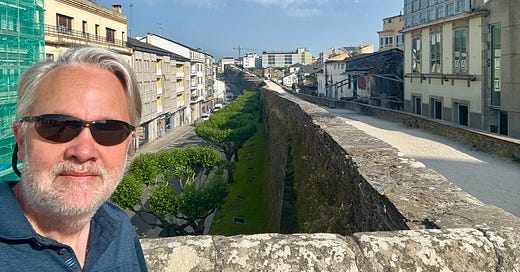



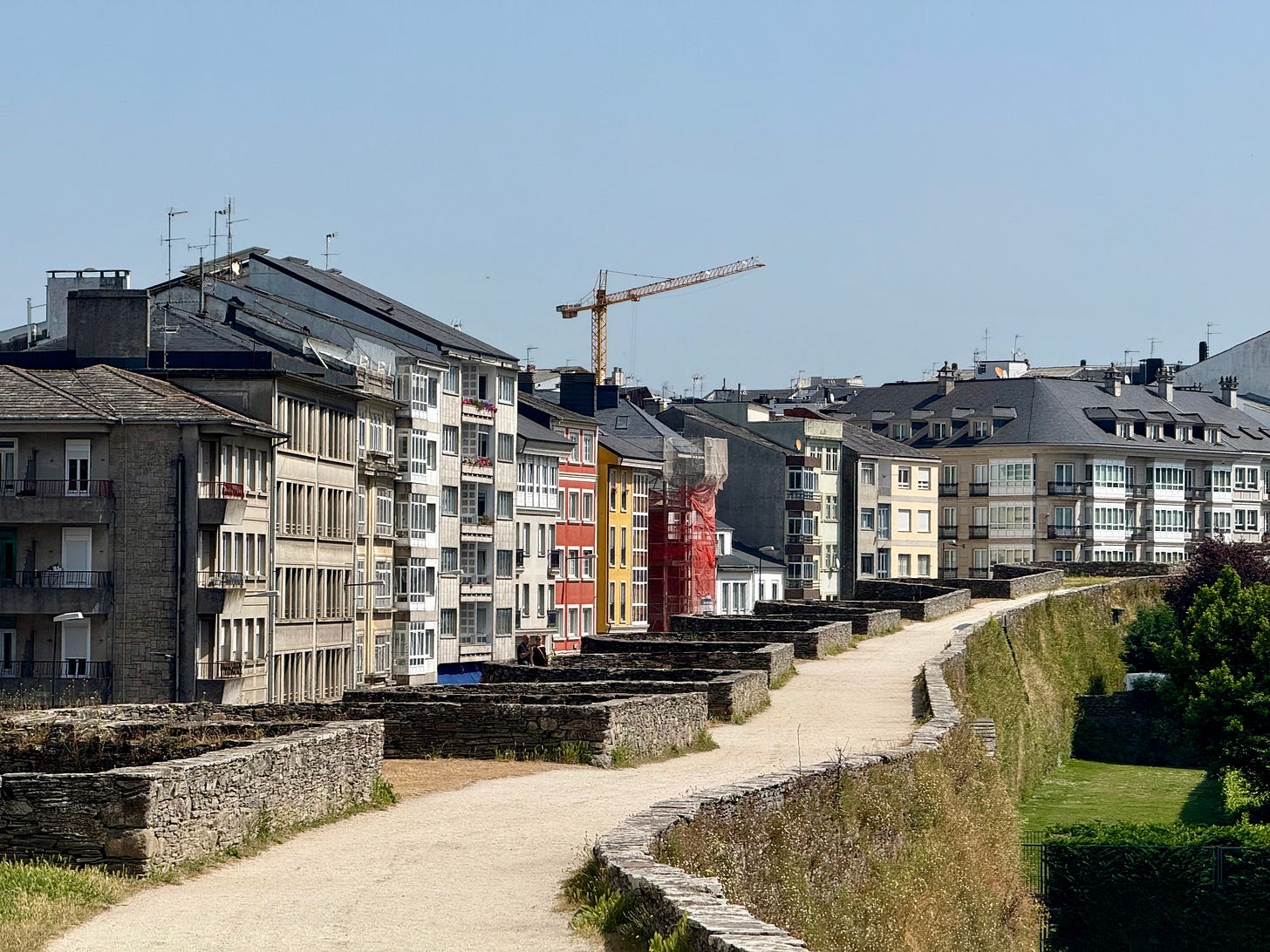
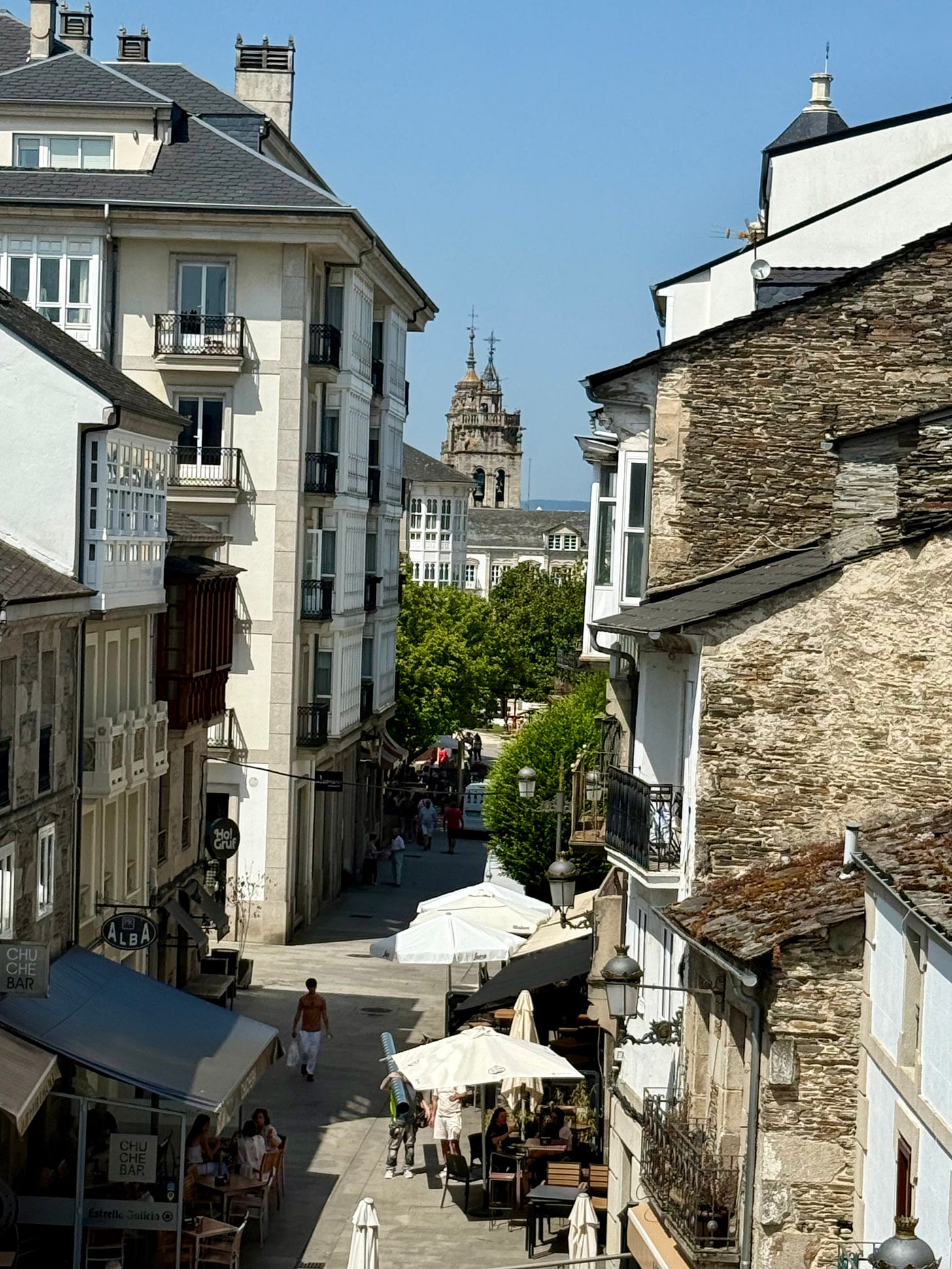
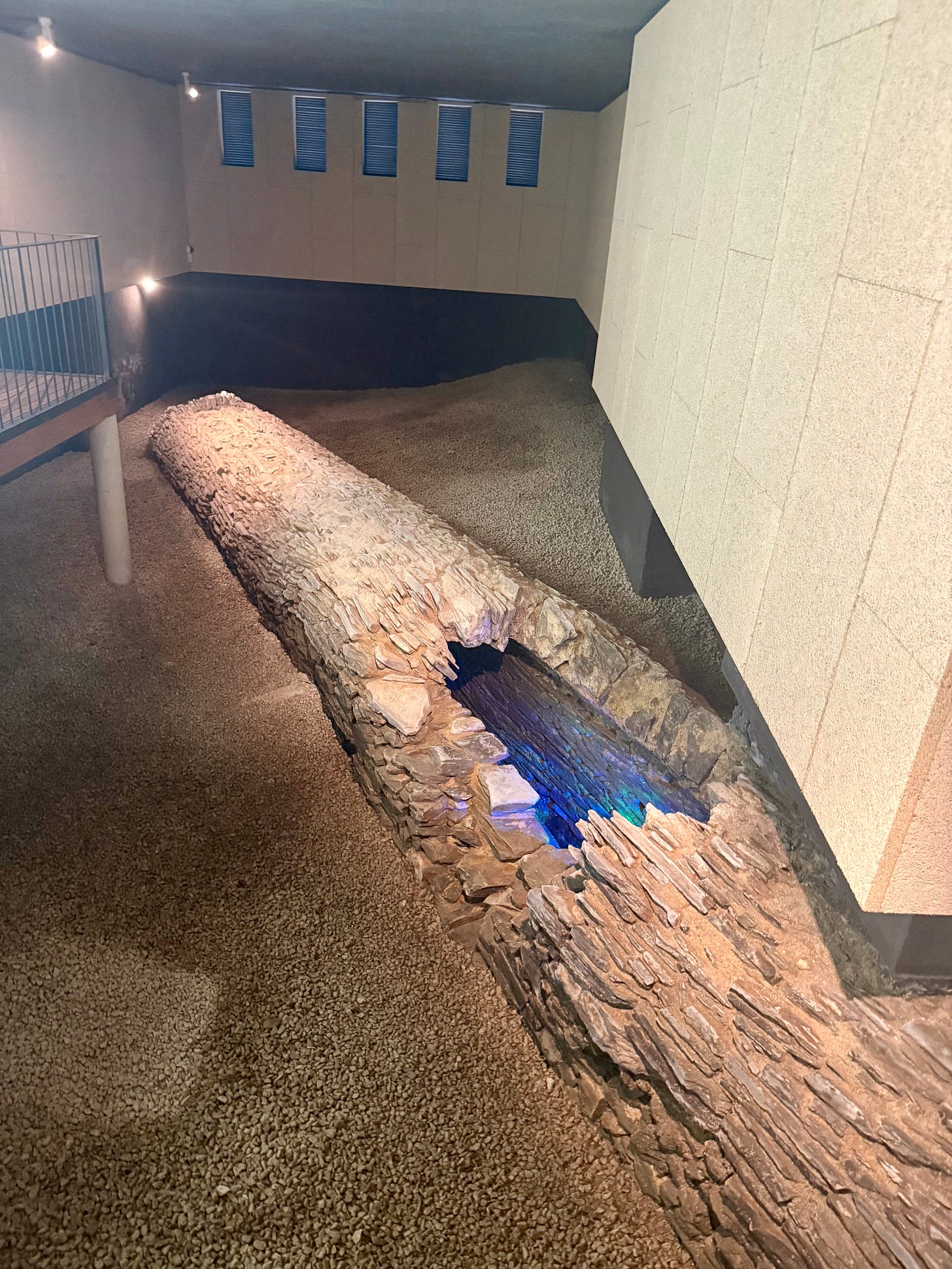
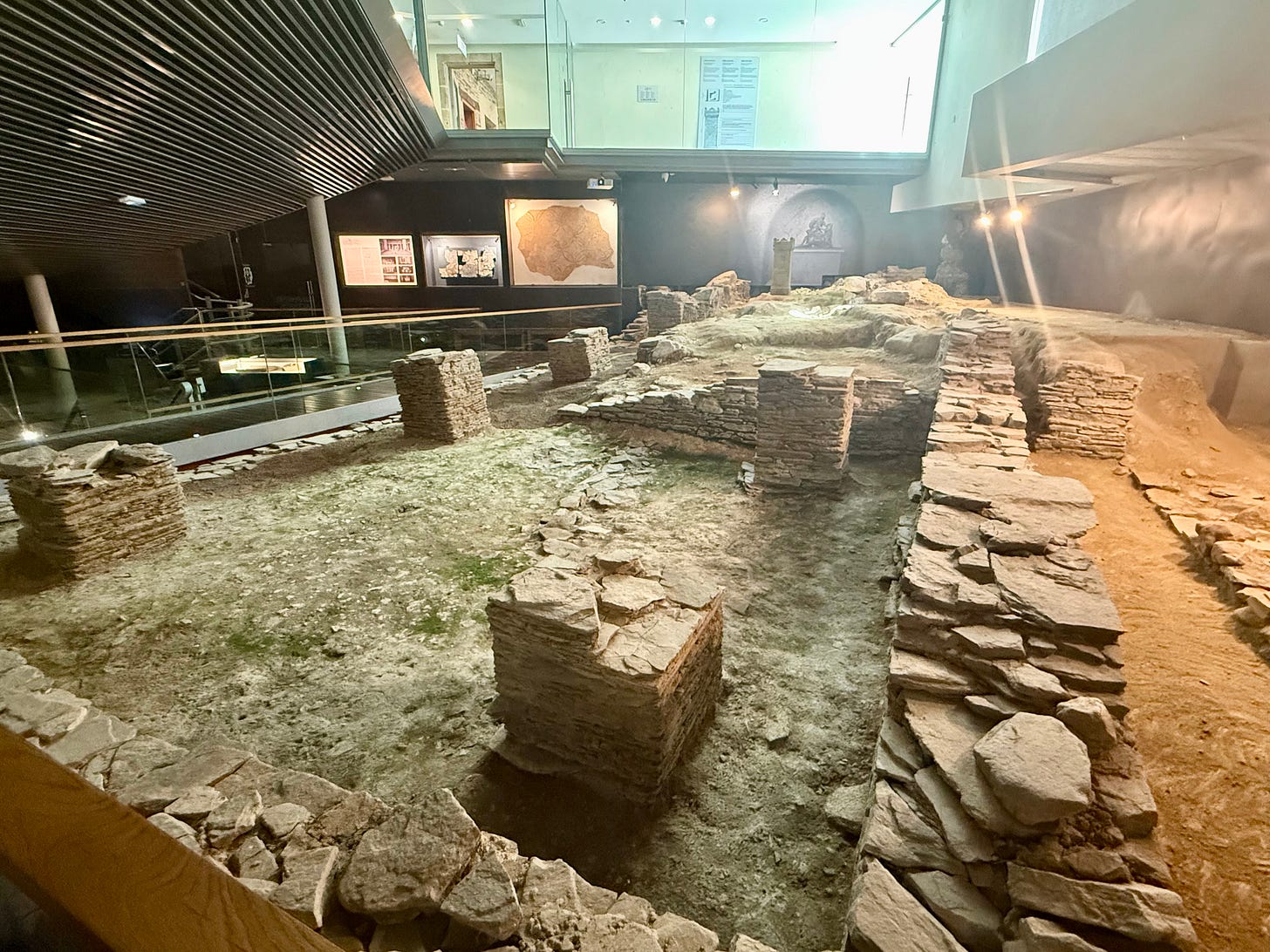

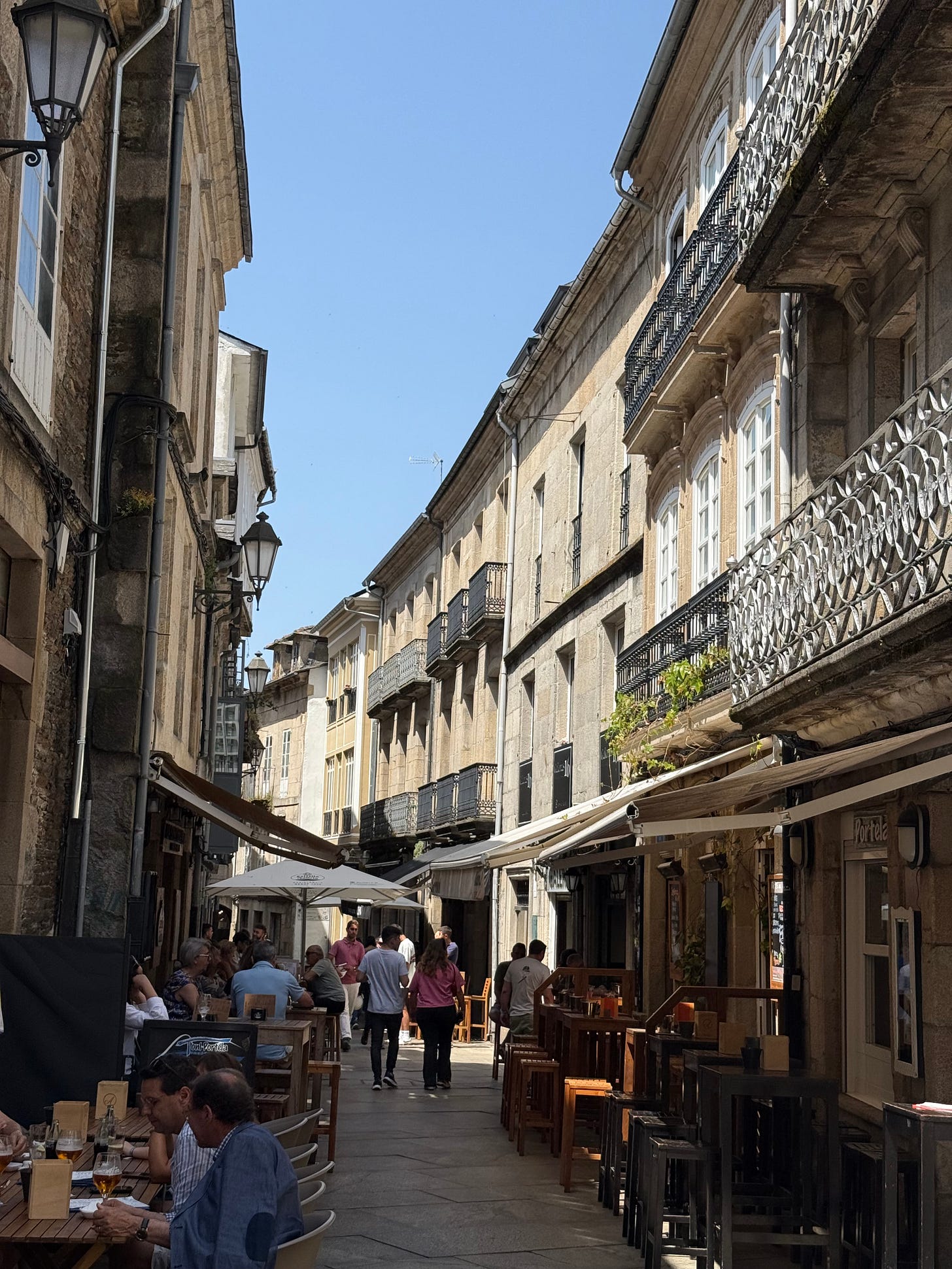
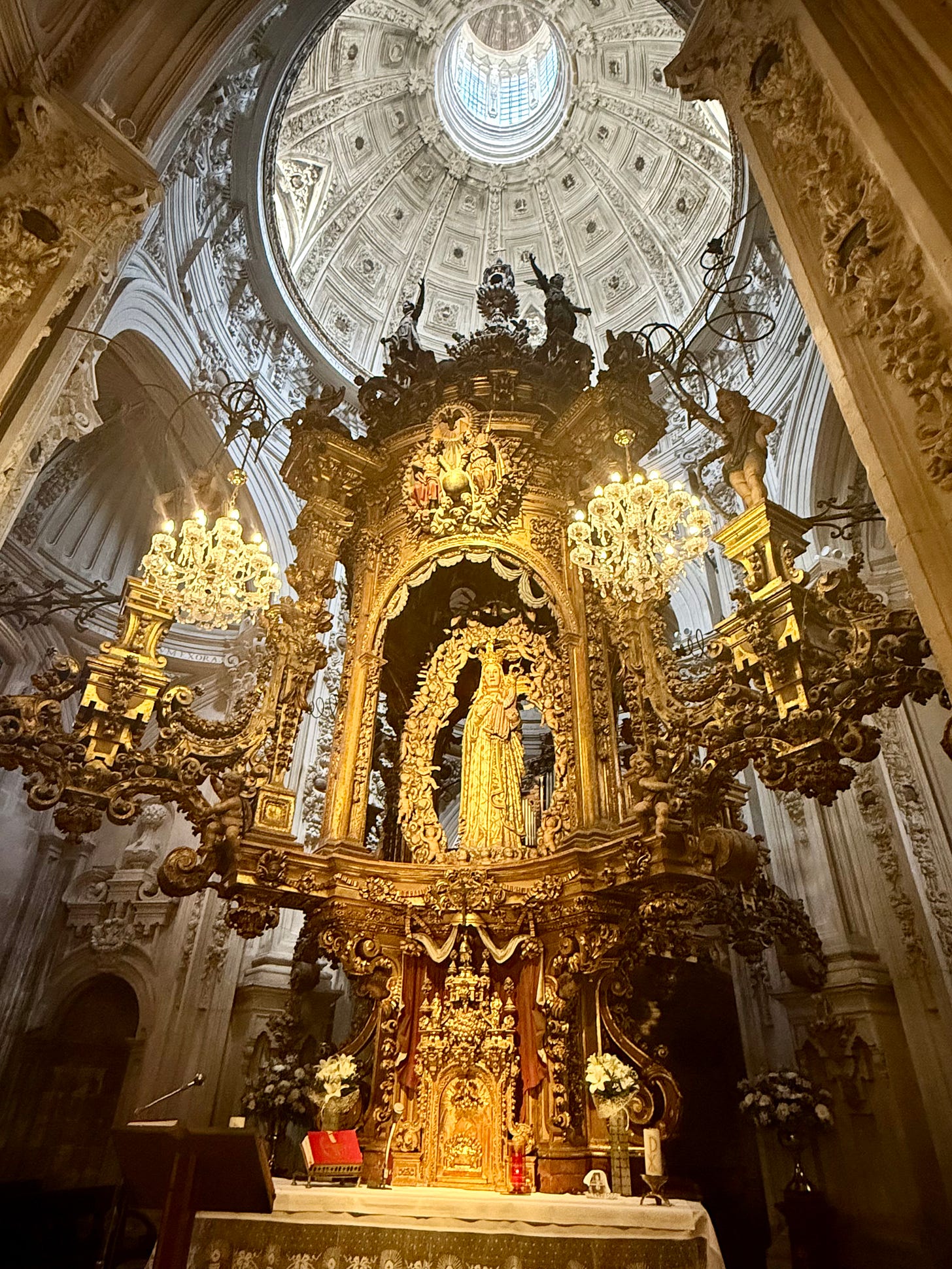
Life of Brian - check!